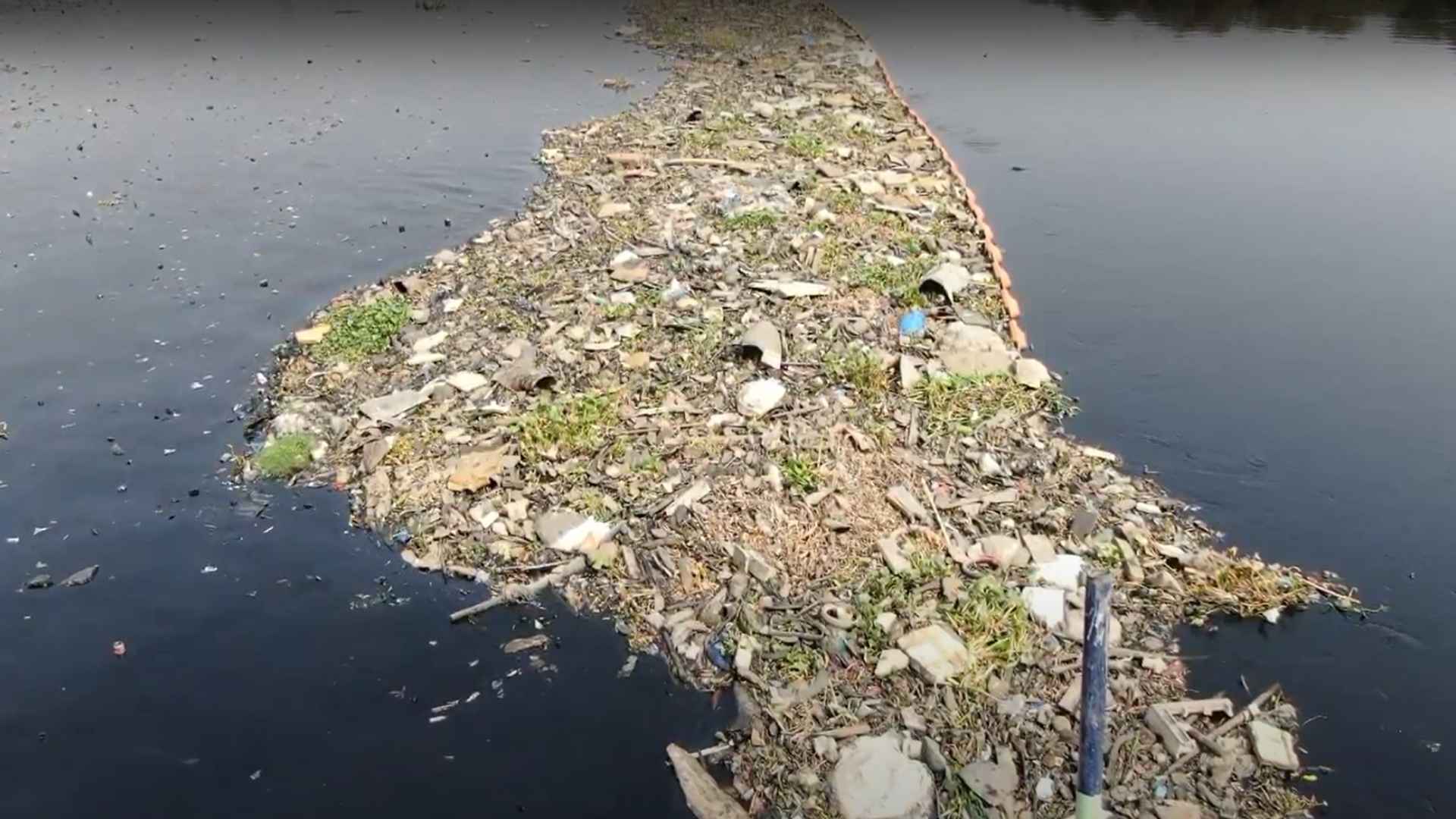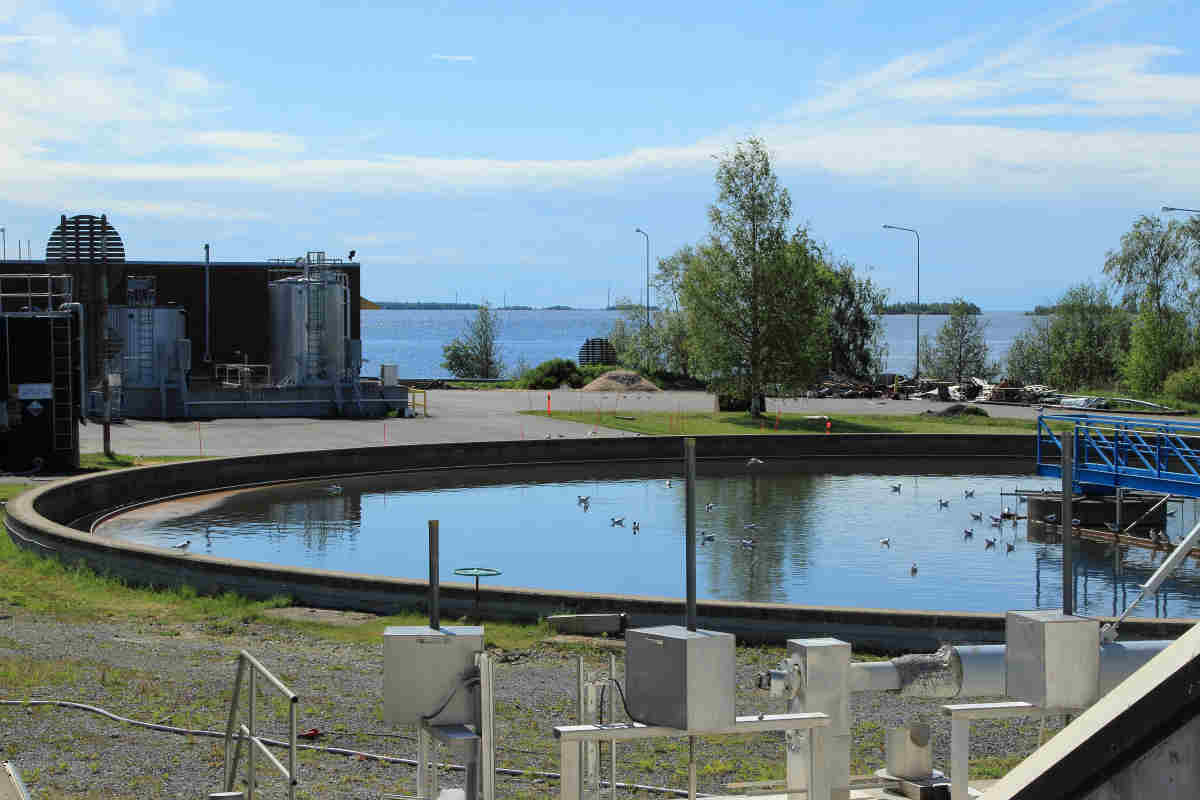From Pollution to Partnership: How Earth5R’s Global Model is Reviving the World’s Rivers
Across continents, rivers—once the arteries of life and civilization—are now choking under the weight of toxic waste, untreated sewage, and rampant plastic pollution. From the Ganges in India to the Mississippi in the United States, the global river pollution crisis has become one of the defining environmental challenges of our time.
According to the United Nations Environment Programme (UNEP), an estimated 80% of wastewater worldwide is released into the environment untreated, directly affecting rivers and the ecosystems that rely on them. In India, where rivers are deeply intertwined with cultural identity and livelihoods, this problem is especially acute.
Enter Earth5R, a Mumbai-based environmental organization that has emerged as a global exemplar of sustainable action. Operating across 53 countries and involving millions of citizens, Earth5R has pioneered a model that unites communities, corporations, and government agencies in a shared mission: the revival of polluted rivers.
Understanding River Pollution: A Scientific Overview
Across continents, rivers that once sustained civilizations are now brimming with contaminants. The causes of river pollution are both sprawling and interlinked, forming a complex web of human activities and ecological negligence. What was once a life-giving force is now, in many regions, a carrier of disease, biodiversity collapse, and economic setbacks.
Plastic pollution—the most visible form of modern waste—has also made rivers its conduit to the oceans. From PET bottles to single-use packaging, plastics enter rivers through poorly managed landfills, storm drains, and human littering. Research published in Nature Communications identifies rivers as the main pathways for plastic waste to reach oceans, with just 10 rivers accounting for over 90% of marine plastic pollution. Once in water, plastics break down into microplastics, which are now being found in fish, shellfish, and even drinking water.
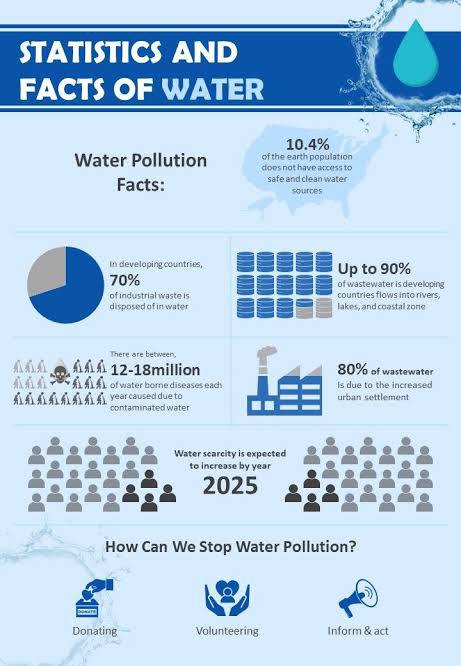
This image presents a comprehensive visual breakdown of various forms of environmental pollution—including water, air, and toxic pollution—using charts and statistics. It highlights the ecological and bacteriological dangers, such as the spread of diseases like tuberculosis and plague, and underscores the proportional contribution of different pollution sources, making it a useful educational tool.
Equally damaging but often overlooked is agricultural runoff, which introduces pesticides, fertilizers, and organic waste into river ecosystems. The excess nitrogen and phosphorus cause eutrophication—a condition where water bodies become oxygen-starved due to algal blooms. The resulting “dead zones” can no longer support aquatic life. The Mississippi River, for instance, feeds into the Gulf of Mexico’s hypoxic zone, the second largest in the world. Similar patterns are now emerging in South Asia, Africa, and Latin America.
The economic costs are no less severe. Polluted rivers impact fisheries, leading to income loss for traditional fishing communities. The tourism industry, especially in eco-sensitive zones, also suffers. For instance, Varanasi’s spiritual tourism is often overshadowed by the visibly polluted state of the Ganges. A study published in Ecological Economics found that restoring river quality could increase regional tourism revenue by up to 30%.
Earth5R: Organization and Philosophy
Born out of the pressing need to address the environmental degradation of urban ecosystems, Earth5R emerged in 2014 as a citizen-driven organization rooted in sustainability and social equity. Headquartered in Mumbai, the organization was founded by Saurabh Gupta, a former corporate professional who shifted focus toward environmental activism after witnessing the dire condition of the city’s water bodies.
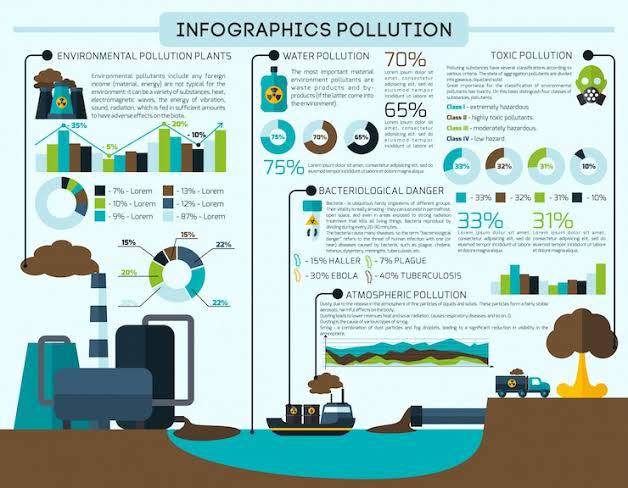
This infographic sheds light on the alarming global water crisis, showing that up to 90% of wastewater in developing countries flows untreated into natural water bodies. It emphasizes key facts like 12–18 million cases of waterborne diseases annually, and offers simple action steps—donating, volunteering, and spreading awareness—as ways to combat water pollution.
In this way, Earth5R turns local residents into environmental stewards, scientists, and educators in their own right. For instance, their Mithi River cleanup project not only removed tonnes of plastic waste but also triggered a broader conversation on waste segregation, involving nearby slum communities, schools, and even local businesses.
The Earth5R Cleanup Framework: Structure and Methodology
River restoration is often imagined as a monumental task left solely to governments or scientific bodies, but Earth5R’s structured, community-centric framework reimagines this effort by weaving together science, social capital, and sustainable business models. Unlike ad hoc cleanups or isolated awareness drives, Earth5R’s methodology is systematic, data-driven, and replicable—designed not just to clean rivers, but to transform how communities perceive and interact with their environment.
Assessment & Mapping: Charting the Problem with Precision
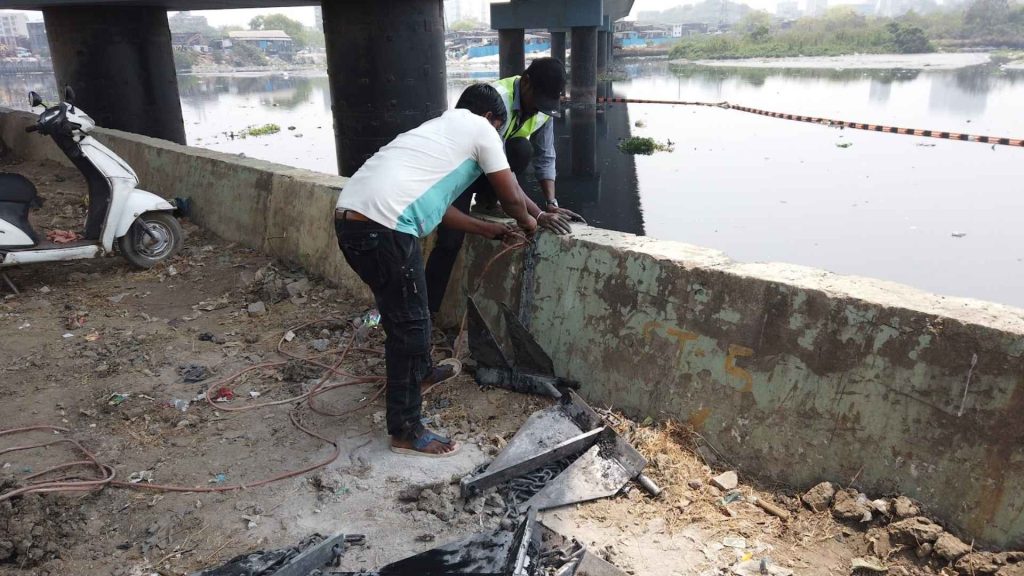
Every meaningful cleanup begins with understanding the extent of pollution. Earth5R employs Geographic Information Systems (GIS) and waste audit techniques to map out pollution hotspots with surgical precision. These tools allow for the identification of the most contaminated zones, flow patterns of pollutants, and proximity to vulnerable populations. Crucially, these assessments are not conducted in a vacuum—citizen science plays a pivotal role.
Community Engagement: Igniting Ownership
Behavioral science provides a strong backbone. Insights from the Nudge Theory, popularized by Nobel laureate Richard Thaler, are embedded into Earth5R’s campaigns. For instance, simple visual cues near dumping spots (like clean vs dirty site imagery) significantly reduced littering. In Pune, a pilot project involving just five schools and 300 students resulted in a 40% reduction in single-use plastic in adjacent households within three months, proving that awareness, when local and interactive, translates into action.
Action & Cleanup Drives: Mobilizing the People
What sets Earth5R apart is its data-driven impact measurement. Each cleanup is followed by quantitative analysis: amount and type of waste collected, area cleaned, and changes in local water quality. For instance, post-cleanup assessments of the Oshiwara River in Mumbai indicated a 23% reduction in surface-level floating debris, verified through drone imagery and water quality sensors over a two-month period.
Waste Management & Circular Economy Integration
Organic waste is composted, plastics are sorted and reused, and innovative upcycling workshops teach residents to repurpose discarded items. This shift towards a circular economy has long-term ripple effects. According to a 2022 UNEP report, implementing circular systems in urban waste management could reduce city-level landfill use by up to 60%. Earth5R’s initiative in Thane transformed over 800 kg of plastic waste into reusable school furniture—turning pollution into public good.
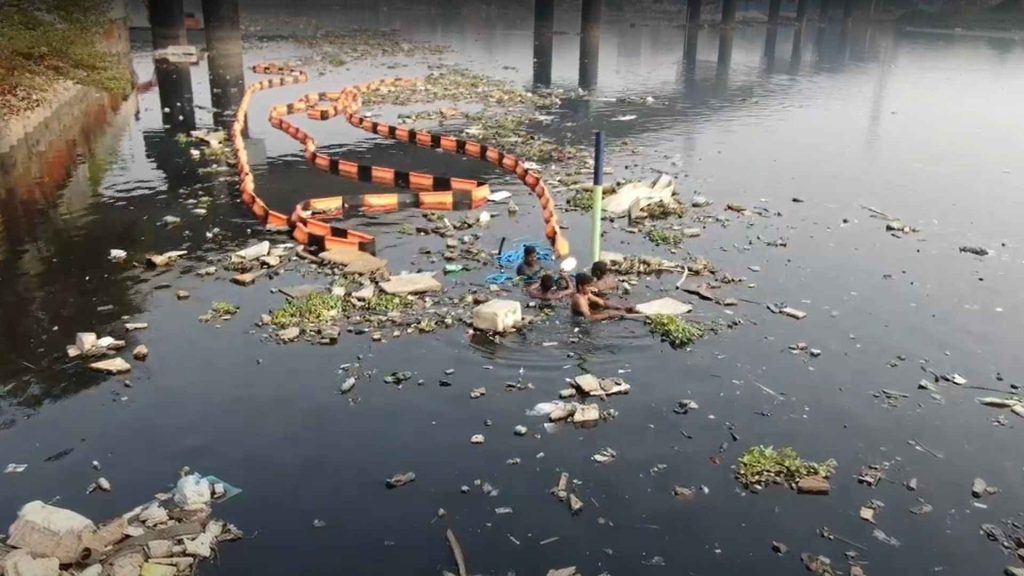
Sustainability & Policy Advocacy: Bridging Citizens and Systems
Beyond cleanup, Earth5R works to embed environmental action into governance. It facilitates dialogues between citizen groups and local bodies, pushing for long-term adoption of sustainable practices. Its work is aligned with several of the United Nations Sustainable Development Goals (SDGs) and has led to collaborations with city councils and even state governments.
Case Study: A River Transformed- How Earth5R is rewriting the story of India’s urban rivers
Reviving the Mithi River: From Waste Dump to Hope Stream
Once flowing as a natural drain through the heart of Mumbai, the Mithi River became infamous for its blackened waters, pungent stench, and toxic sludge. This 18-kilometre-long river, which begins at the Vihar and Powai lakes and drains into the Mahim Creek, had effectively turned into a dumping ground due to decades of unchecked industrial effluents, untreated sewage, and urban waste.
In response to this mounting crisis, Earth5R launched a targeted, multi-stakeholder cleanup initiative aimed not just at temporary waste removal, but at building long-term community-driven resilience. The model emphasized Public-Private-Community Partnership (PPCP) and focused on scientific planning, citizen engagement, and collaboration with local authorities.
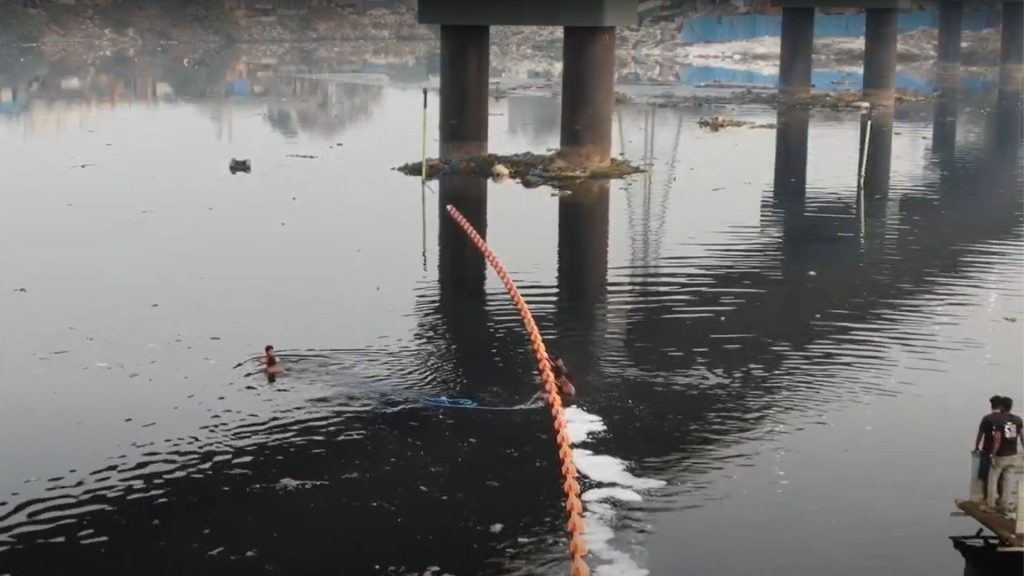
According to Earth5R’s official impact data, more than 14 tonnes of waste were removed over a series of cleanup drives. Water samples were collected and compared across months. The Biological Oxygen Demand (BOD), a key indicator of organic pollution, showed a measurable decline—falling by nearly 20% in the pilot cleanup zones after consistent intervention over six months.
Scientific Backing and Behavioral Transformation
In partnership with environmental scientists and engineers, Earth5R introduced low-cost filtration zones using bio-remediation techniques like vetiver grass plantations along the banks. According to a report co-published with Mumbai University’s Environmental Sciences Department, such interventions improved turbidity and reduced surface water contaminants.
But the most lasting change wasn’t just chemical—it was psychological. Local citizens who once avoided the riverbanks began organizing neighborhood watch programs and educational campaigns for schools. This kind of collective behavioral shift—the hallmark of Earth5R’s approach—has been documented in a research paper published in the Journal of Environmental Management (2022), which links community ownership to sustained ecological restoration.
More Case Studies: Earth5R in Action Across India
Yamuna River Cleanup – New Delhi
Another standout example is Earth5R’s collaboration with schools, NGOs, and resident welfare associations along stretches of the Yamuna River in Delhi, notorious for its frothy banks and chemical-laden waters. Educational workshops and cleanup events were combined with pressure campaigns directed at polluting factories.
Details and impact metrics can be found on Earth5R Yamuna Project. Water testing before and after the initiative showed a 15% decrease in surface oil content and significant increases in dissolved oxygen levels.
Panchganga River – Kolhapur, Maharashtra
In Kolhapur, Earth5R’s work with local women’s self-help groups along the Panchganga River focused on integrating waste management with livelihood generation. Collected plastic was turned into eco-bricks, and biodegradable waste was composted and sold. As per Earth5R’s impact dashboard, over 7 tonnes of waste were processed sustainably, while over 200 families benefitted economically.
Sabarmati River – Ahmedabad, Gujarat
Although widely known for its riverfront beautification, the Sabarmati River still suffers from internal pollution. Earth5R’s intervention worked behind the scenes—training slum youth near the banks on how to monitor pollution through citizen science kits. This data was shared with local authorities, contributing to early detection of dumping zones. See the full story on the Earth5R Sabarmati Page.
These case studies highlight how scalable and adaptable Earth5R’s PPCP model is, with outcomes driven not just by cleanup logistics but by deep-rooted community engagement. What makes Earth5R’s work exceptional is its ability to transform polluted rivers into symbols of civic participation, driven by collaboration across all layers of society.
Challenges and Lessons Learned
One of the foremost barriers is lack of awareness. In many urban and semi-urban settings, residents living near polluted rivers often fail to recognize the direct health and ecological impacts of untreated waste. A 2022 study published in Environmental Research Communications revealed that nearly 60% of residents living along polluted urban rivers in South Asia were unaware of the water’s contamination level and its consequences.
This lack of knowledge hampers citizen engagement, making community mobilization a slow and uneven process. Earth5R countered this by introducing door-to-door awareness campaigns, school engagement programs, and citizen science tools—initiatives that translated abstract environmental issues into relatable local narratives.
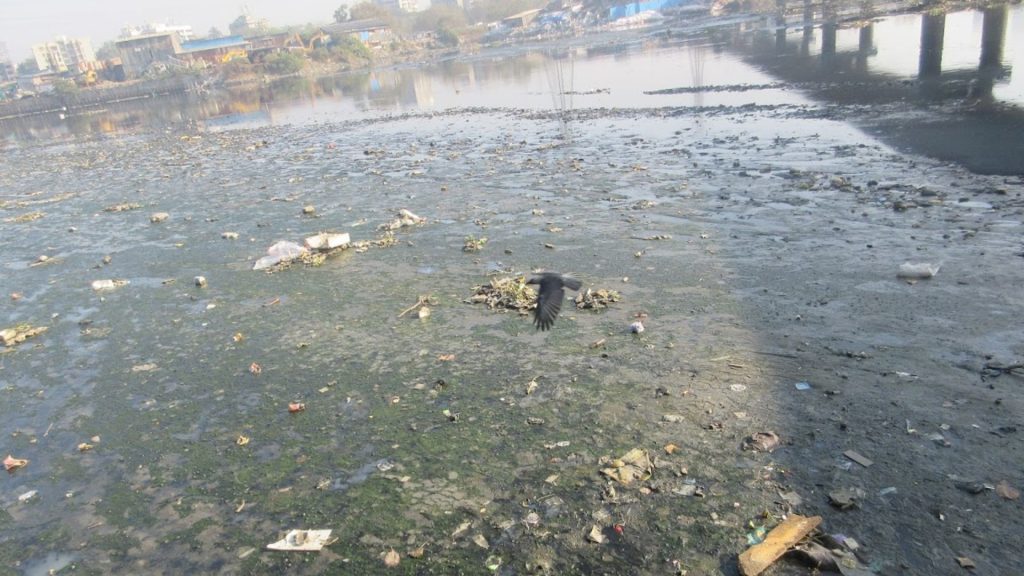
Earth5R leaned heavily on CSR collaborations and strategic alliances with corporates like HDFC Bank and Renault India. These partnerships provided not only capital but also technical expertise, employee volunteers, and logistical support. In return, corporations aligned their social responsibility goals with measurable environmental impact, fostering a mutually beneficial relationship.
The Path Ahead: Scaling Community-Led Cleanups
As climate anxieties rise and urban water bodies continue to choke under the weight of human neglect, the need for scalable, community-driven solutions becomes more urgent than ever. Earth5R’s multi-stakeholder river cleanup strategy has emerged not just as a success story but as a blueprint for replication, particularly in regions where ecological degradation intersects with socio-economic vulnerabilities.
To effectively scale such community-led cleanups, localized adaptations of the Earth5R model must be prioritized. The success of its intervention in Mumbai’s Mithi River, for example, shows that combining citizen mobilization with scientific monitoring and circular economy principles can yield tangible, measurable results. However, these outcomes are not geography-bound—they are transferable.
A New Paradigm in River Restoration
In a world grappling with ecological decay, the Earth5R Cleanup Framework stands out as a beacon of innovation and collective action. By merging the strengths of scientific evidence, government infrastructure, corporate accountability, and grassroots participation, Earth5R has demonstrated that river cleanup is not just a policy issue—it is a people’s movement supported by data, guided by research, and powered by purpose.
The final takeaway from Earth5R’s approach is a renewed sense of environmental citizenship. It reminds us that every discarded bottle is a political act, every cleanup drive is a civic declaration, and every river saved is a legacy for future generations. In the face of ecological pessimism, Earth5R offers a quiet, resolute hope: that the tides can be turned—not by one, but by all.
FAQs on Transforming River Pollution into Community Action: The Earth5R Cleanup Framework
What is the Earth5R River Cleanup Strategy?
The Earth5R River Cleanup Strategy is a multi-stakeholder environmental initiative that brings together citizens, corporations, and government bodies to restore polluted rivers through a holistic approach grounded in sustainability, education, and data-driven action.
How does Earth5R differ from traditional cleanup programs?
Unlike top-down approaches where governments or corporations act in isolation, Earth5R empowers local communities to become co-owners of the cleanup effort. This integrated Public-Private-Community Partnership (PPCP) ensures long-term impact by combining grassroots engagement with institutional and corporate support.
What is a Public-Private-Community Partnership (PPCP)?
A PPCP is a collaborative model where public institutions, private companies, and local communities work together to address shared challenges. In Earth5R’s model, each stakeholder plays a crucial role—policy from the government, funding and innovation from businesses, and on-ground execution from communities.
Why is community involvement important in river cleanup?
Community involvement creates a sense of ownership and accountability, making the effort more sustainable. When local residents understand how pollution affects their health and environment, they are more likely to adopt eco-friendly practices and support long-term river restoration.
What role do corporations play in the Earth5R model?
Corporations contribute through their Corporate Social Responsibility (CSR) programs by offering funding, technical expertise, and human resources. Some businesses also integrate sustainability into their supply chains by adopting circular economy principles, reducing their own waste generation.
How do government bodies support Earth5R’s cleanup initiatives?
Governments help by enabling policies, offering infrastructure support such as waste collection systems, and working closely with Earth5R to monitor environmental indicators. They also help in aligning the initiative with broader state or national environmental goals.
Which rivers has Earth5R worked on?
One of Earth5R’s notable interventions has been on the Mithi River in Mumbai, a severely polluted waterway. Their work there has included waste removal, citizen engagement, and scientific monitoring of water quality before and after cleanup.
What scientific tools are used to assess river pollution in this framework?
Earth5R leverages data analytics, water quality testing kits, and mobile technology to assess pollution levels. These tools help in identifying pollutants, tracking improvements, and ensuring transparency with stakeholders.
How does Earth5R promote behavioral change among communities?
Through citizen science programs, workshops, clean-up drives, and digital education campaigns, Earth5R promotes environmental literacy and empowers people with actionable knowledge to make lifestyle changes that reduce pollution.
Is there evidence of measurable impact from Earth5R initiatives?
Yes, Earth5R tracks various metrics like tons of waste removed, water quality indicators (like BOD and COD levels), and participation rates. For example, in one Mumbai project, over 300 tons of waste were removed and hundreds of citizens trained in sustainable waste practices.
How is citizen science used in the river cleanup process?
Citizen science involves training local residents to collect and interpret environmental data, such as water samples. This decentralizes knowledge production and increases community engagement while contributing to scientific documentation of river health.
Can Earth5R’s model be replicated in other countries or regions?
Absolutely. The framework is modular and adaptable, allowing it to be implemented in diverse socio-political environments. Its reliance on local ownership and scientific validation makes it highly scalable across different geographies.
What challenges does Earth5R face in implementing its cleanup model?
Challenges include coordinating diverse stakeholders, ensuring long-term behavioral change, and addressing gaps in policy enforcement or corporate participation. Funding continuity and bureaucratic hurdles can also impact progress.
How can schools or universities participate in the initiative?
Educational institutions can collaborate by introducing sustainability modules, encouraging student-led projects, and hosting awareness programs. Earth5R often works with youth ambassadors to channel student energy into community impact.
What is the economic benefit of river cleanups?
Clean rivers improve public health, reduce medical costs, boost tourism, and enhance real estate value along riverbanks. They also support livelihoods dependent on clean water, such as fishing and small-scale agriculture.
How do circular economy principles fit into Earth5R’s framework?
The circular economy model emphasizes reusing and recycling waste instead of discarding it. Earth5R promotes this by organizing waste segregation drives, composting initiatives, and training communities to treat waste as a resource.
What makes the Mithi River a key case study for this model?
The Mithi River is a complex mix of industrial, domestic, and stormwater waste. Earth5R’s success in improving its condition—despite these multifaceted challenges—makes it a powerful example of the PPCP approach working in action.
How can individuals volunteer with Earth5R?
Interested individuals can sign up through Earth5R’s website to join clean-up drives, workshops, and educational programs. Volunteers often become long-term ambassadors, spreading awareness and initiating local actions.
How does Earth5R ensure transparency in its projects?
All initiatives are backed by data collection and public reporting. Stakeholders can access progress updates, environmental metrics, and impact reports, building trust and encouraging wider participation.
What is the long-term vision of Earth5R?
Earth5R aims to build resilient, sustainable communities that act as custodians of their natural ecosystems. By turning river cleanups into participatory civic movements, it hopes to redefine how environmental action is taken in urban India and beyond.
Call to Action: Transforming River Pollution into Community Action – The Earth5R Cleanup Framework
The crisis of river pollution is no longer a distant environmental concern—it is a lived reality for millions who depend on these water bodies for drinking, farming, fishing, and spiritual practices. As rivers gasp for breath under the weight of industrial effluents, urban waste, and plastic debris, Earth5R’s multi-stakeholder approach offers a compelling model of hope, one built not just on cleanups but on collective accountability and transformative action.
For citizens, this is the time to rise beyond awareness and step into action. Participating in local cleanup drives, practicing waste segregation, reporting polluters, and educating peers are simple yet profound steps that build resilient ecosystems from the grassroots. The Earth5R model thrives on citizen science and local stewardship—proving that everyday choices can lead to extraordinary change when communities are mobilized with purpose.
Corporations must reframe Corporate Social Responsibility (CSR) not as a legal checkbox, but as a strategic investment in the health of the ecosystems that sustain their markets and supply chains. By partnering with organizations like Earth5R, businesses can fund and co-design circular economy interventions, support innovation in waste management, and lead by example through sustainable operations and transparency.
Governments, both local and national, must act as enablers of these partnerships. The success of the Earth5R framework depends heavily on robust policy support, access to public data, infrastructure facilitation, and regulatory enforcement. Municipal corporations should consider embedding PPCP models into their environmental strategies and scaling them across cities and states.
The Earth5R cleanup framework is not just about restoring rivers—it is about redefining civic engagement, environmental stewardship, and collective governance. The time to act is now. Every stakeholder has a role to play, and every action counts. As Earth5R demonstrates, when public resolve, private innovation, and community commitment align, rivers can be revived, and societies reimagined.
– Authored by Mridu Mishra

